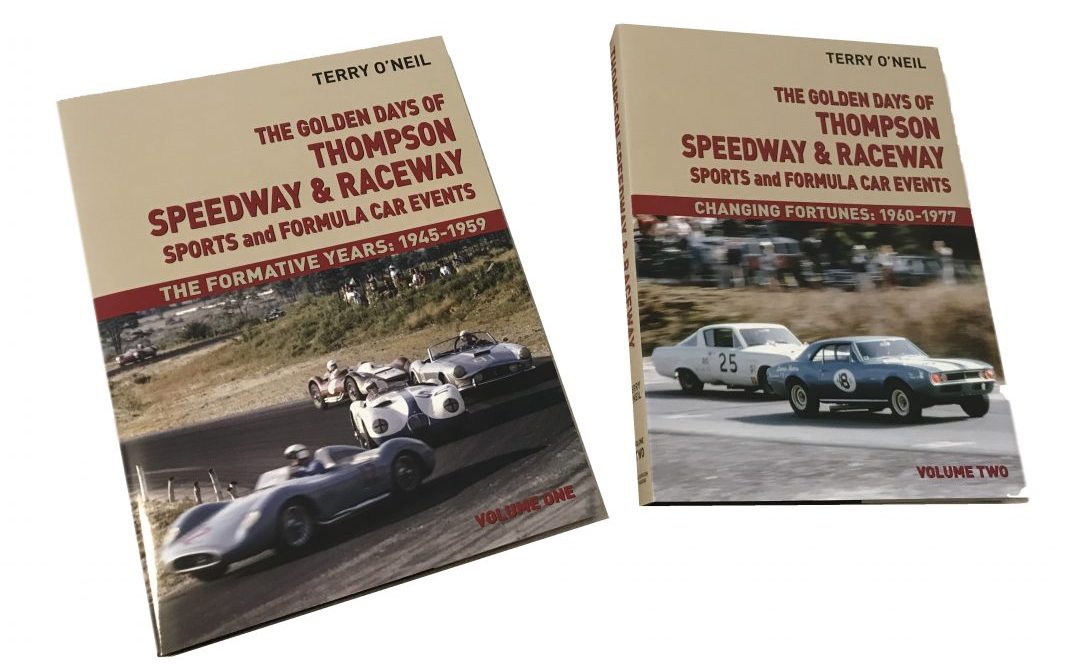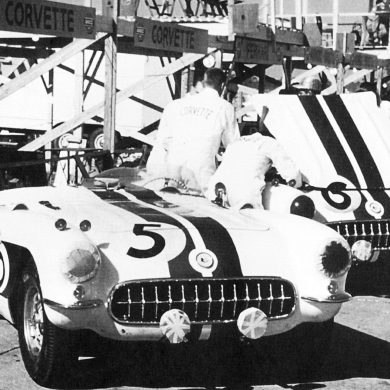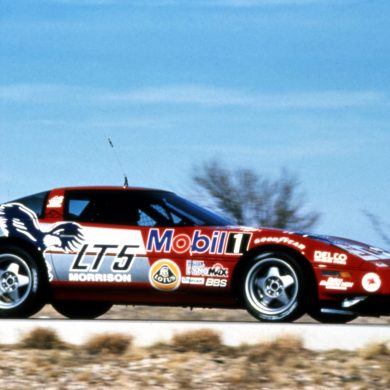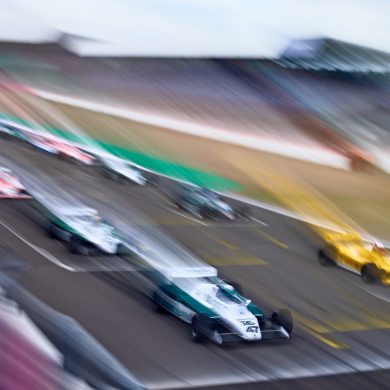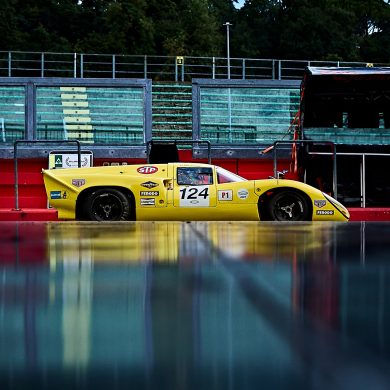The Golden Days of Thompson Speedway and Raceway 1945-1977
By Terry O’Neil
Occasionally a spark of inspiration can become the catalyst for change. Just such a convergence took place with the construction of Thompson Speedway in 1940, a 5/8thmile oval track, dubbed “The Indianapolis of the East.” A road course soon joined to the oval in 1952, which enlarged the track to form the first privately owned complex where sports car drivers could race safely. Upon reflection, the creation of Thompson transformed the face of sports car racing in America (or, at a minimum, on the East Coast), and hastened the demise of the dangerous open-road events such as those held at Watkins Glen.
While the history of what transpired at Thompson had been all but forgotten by the racing fraternity, fortunately author Terry O’Neil has devoted an amazing amount of effort and research into chronicling the complete history of the track from its birth through to today. These almost obsessive-compulsive two volumes tell the story of the ground-breaking racetrack and, as far as humanly possible, detail the drivers and cars that participated in the races. Each tome is profusely illustrated with contemporary photographs showing well-known drivers such as Briggs Cunningham, Bill Lloyd, Bill Spear, Lance Reventlow, Walt Hansgen, George Constantine and Denise McCluggage in action driving everything from Maseratis, Jaguars and Porsches, to Coopers, Ferraris and as well as a host of lesser-known marques.
Volume One, The Formative Years: 1945-1959, covers the years 1938-1960 and describes the developments of sports car racing at Thompson, which dates as early as 1945. It further explains the complicated and often antagonistic relationship between the landowner, John Hoenig, and raceway manager George Weaver, and their unsuccessful attempts to find common ground. Their disagreements led to the development of the raceway’s second layout by Weaver as it separated from the Speedway oval in 1958.
Volume Two, Changing Fortunes: 1960-1977, sees Hoenig and Thompson Raceway land in Windham County court in 1961, the culmination of a long-standing dispute over share holdings. SCCA policy changes in the first half of the 1960s involving the conflict between professional and amateur status also contributed to the eventual demise of the raceway under Weaver’s control in 1967. Subsequently, the venue was revived by the Hoenig family, with a new track that incorporated the original Speedway oval, but the unfortunate timing of the OPEC fuel crisis, combined with a lack of investment and general decline in spectator interest, ultimately led to its eventual closure again in 1977. Fortunately, today the raceway has been resurrected yet again and runs as a successful venture under the control of Jonathon Hoenig, a great-grandson of the original owner.
This definitive history of a key a venue in the development of American road racing is a must-have for history buffs and the casual fan alike.
Two volumes (330 mm x 240 mm), 760 pages, hard cover with dust jackets and slip case, limited to 500 copies, all signed by the author.
$225 (£170)


